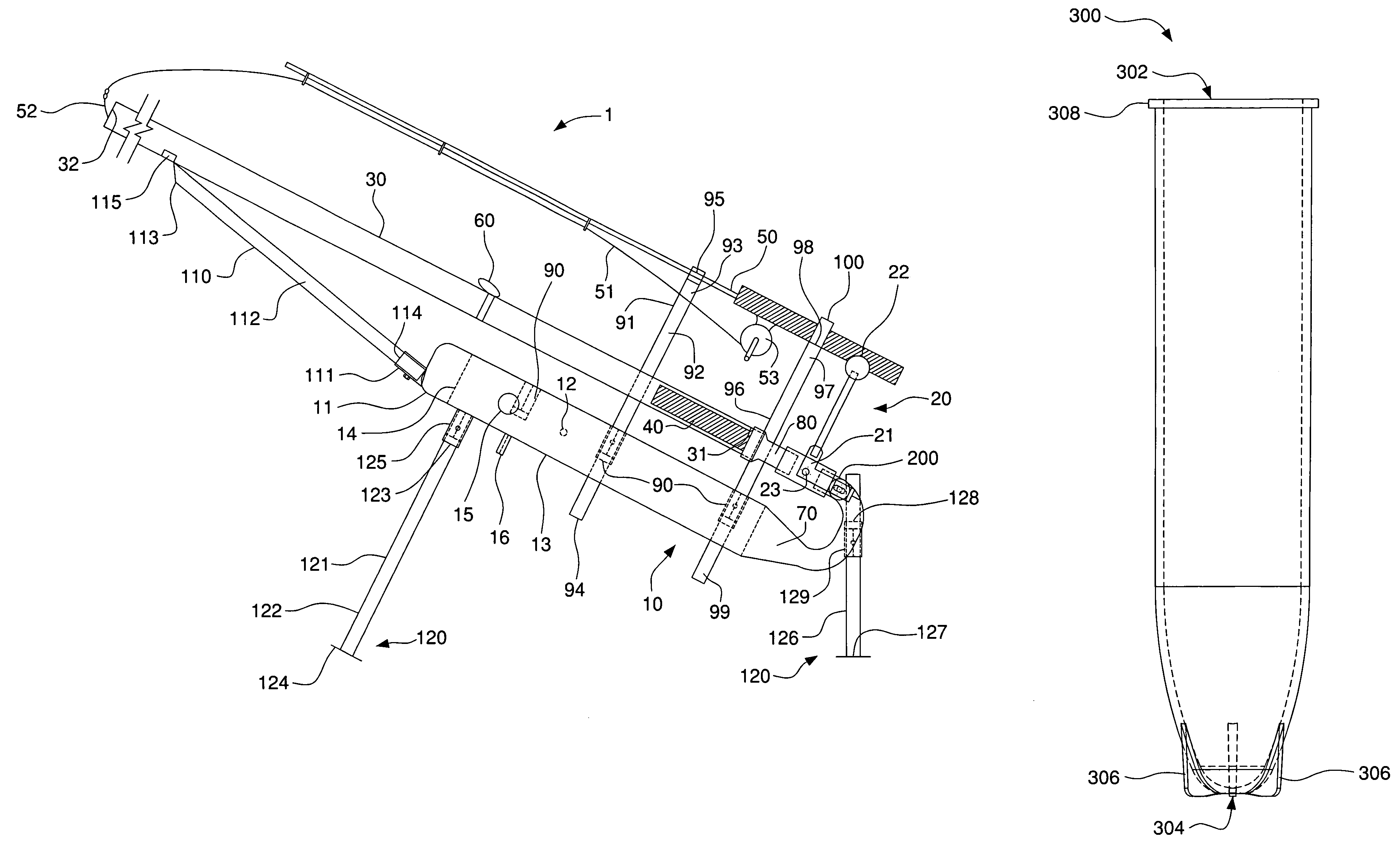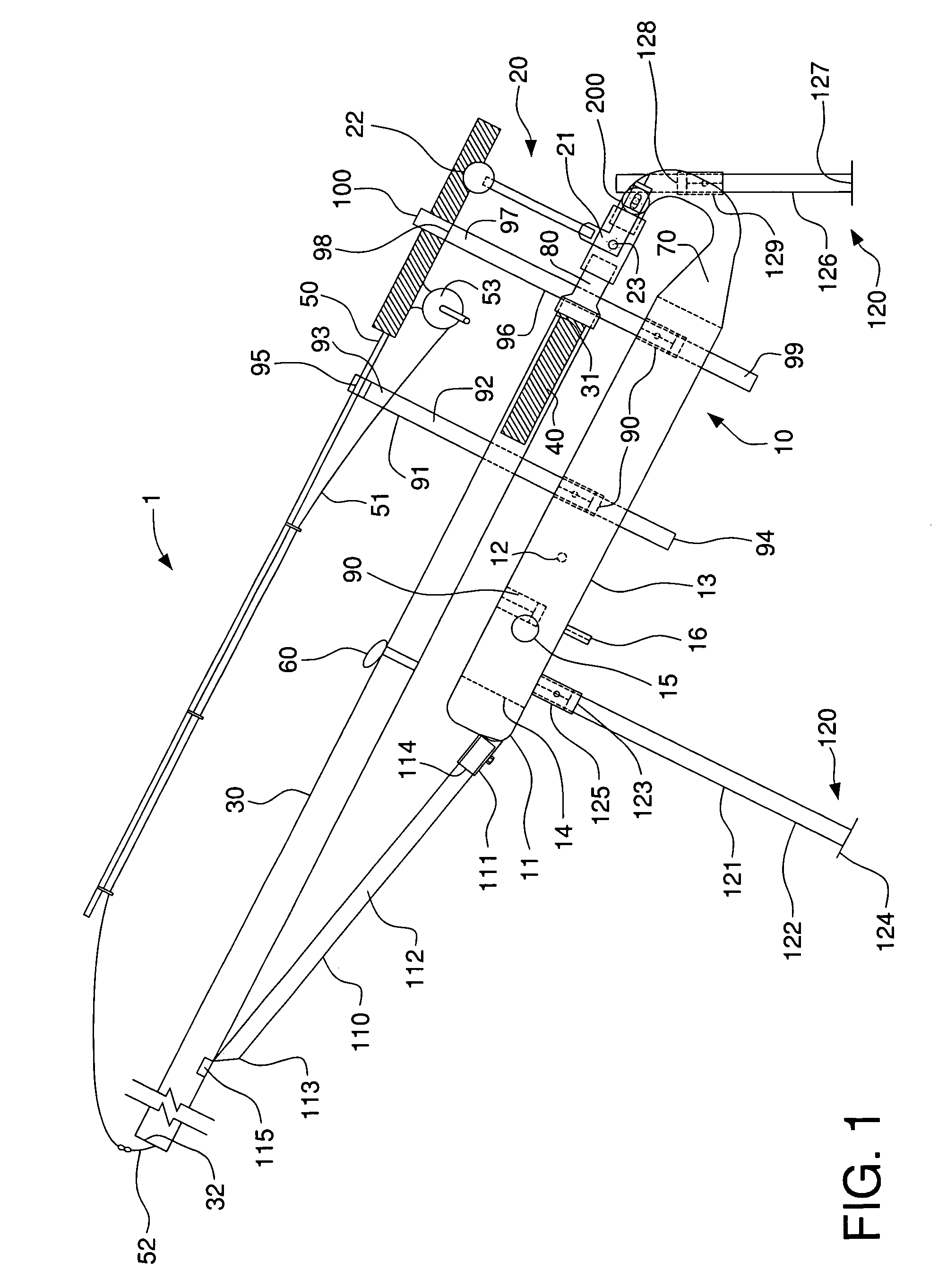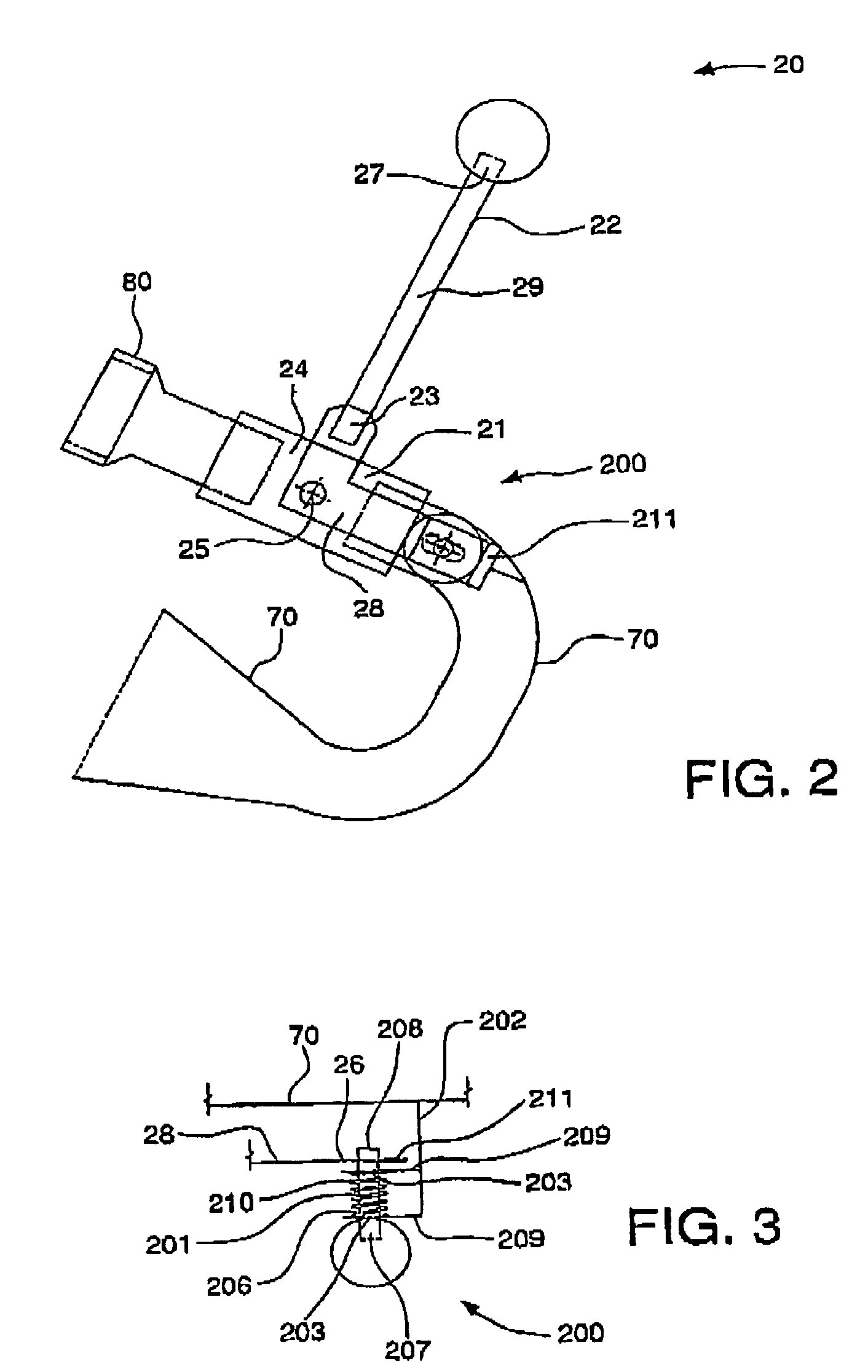Fishing line casting and bait projectile system
a technology of projectiles and fishing lines, which is applied in the field of fishing line casting art, can solve the problems of imposing on the fisherman certain body postures, ineffective casting methods in confined quarters, and dangerous movements during casting
- Summary
- Abstract
- Description
- Claims
- Application Information
AI Technical Summary
Benefits of technology
Problems solved by technology
Method used
Image
Examples
Embodiment Construction
[0023]FIGS. 1-3 show one possible embodiment of a fishing line casting system 1 having features in accordance with the present invention. In a powered fishing line casting arrangement, the present invention contemplates not only the improved compressed gas fishing line casting arrangement in which conventional fishing rods, spinning reels, and other fishing tackle may be conveniently utilized without alteration, but also new and improved structures comprising the individual components of the system. New and improved control means 20 also may be utilized to control the flow of the compressed air. Additional embodiments are contemplated for use in a variety of environments. The apparatus may be utilized on a boat and the support means may vary upon stability requirements.
[0024]An integral part of the system is the projectile 40 that is launched by the fishing line casting system and to which the fishing line 51 and, if desired, the bait, is attached. New and improved projectiles also ...
PUM
| Property | Measurement | Unit |
|---|---|---|
| length | aaaaa | aaaaa |
| length | aaaaa | aaaaa |
| depth | aaaaa | aaaaa |
Abstract
Description
Claims
Application Information
 Login to View More
Login to View More - R&D
- Intellectual Property
- Life Sciences
- Materials
- Tech Scout
- Unparalleled Data Quality
- Higher Quality Content
- 60% Fewer Hallucinations
Browse by: Latest US Patents, China's latest patents, Technical Efficacy Thesaurus, Application Domain, Technology Topic, Popular Technical Reports.
© 2025 PatSnap. All rights reserved.Legal|Privacy policy|Modern Slavery Act Transparency Statement|Sitemap|About US| Contact US: help@patsnap.com



